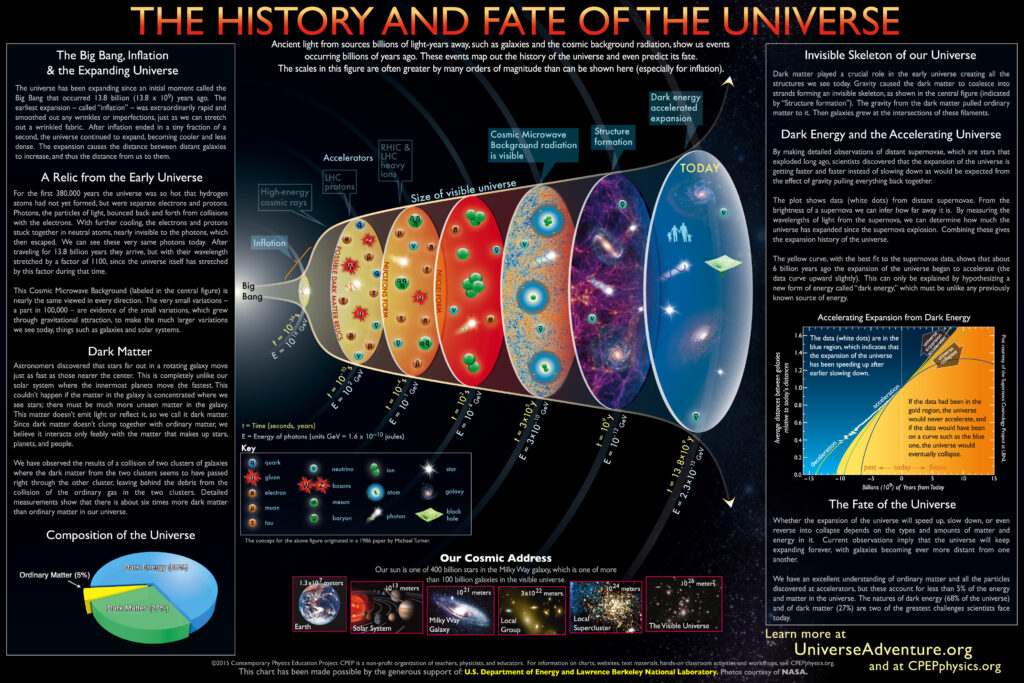History and Fate of the Universe
The History and Fate of the Universe Chart
The History and Fate of the Universe chart illustrates what is now known about cosmology, dark matter, dark energy, and the fate of the universe. The chart is filled with information covering a broad range of cosmological topics, including the Big Bang and the accelerating universe.
The centerpiece is an evolutionary timeline that takes viewers from 10-43 seconds, when the now-visible universe was smaller than a proton, to the current era, about 14 billion years later, when the visible universe contains 4 x 1011 galaxies. Side panels provide short discussions on the birth, inflation and expansion of the universe, the cosmic microwave background, and redshifts of distant supernovas.

About the chart
The development of the History and Fate of the Universe chart was made possible by the generous support of the U.S. Department of Energy and Lawrence Berkeley National Laboratory. Scientists, teachers and CPEP members worked together on developing the chart and the accompanying UniverseAdventure.org website. A key member of the development team was Dr. George Smoot, a CPEP member who was awarded the 2006 Physics Nobel Prize with John Mather for “their discovery of the basic form of the cosmic microwave background radiation as well as its small variations in different directions.” The Royal Swedish Academy of Sciences released information for the public about the 2006 Nobel Prize, and it contains a summary of cosmological research. If you are interested in learning more from Dr. Smoot, he discusses the design and expansion of the universe in this TED talk.
These activities can be used to supplement the topics on the Teaching Chart, The History and Fate of the Universe, produced by the Contemporary Physics Education Project (CPEP). Included are 2 activities for high school or introductory college courses. Teachers may reproduce these activities for their classroom use with the required credit to CPEP.
Separate Teacher’s Notes for each activity include equipment information, background information and suggestions, expected results, and answers to the questions that are asked in the student activities.
Resources
The educational outreach team from the Perimeter Institute has a collection of interactive teacher’s demonstrations, videos, lesson plans and activities on topics such as dark matter and gravitational lensing.
The OpenStax Astronomy textbook is a free online textbook through Rice University. Chapters 24-28 of the text (which can be viewed online or downloaded as a pdf) cover topics like blackholes and curved spacetime, as well as the expanding universe and dark matter. Chapter 29 is all about the Big Bang Theory.
Ted Talks:
Carl Sagan proposed reducing all of time down to a 12 month calendar so that we can understand and appreciate when different events in the evolution of the universe (and Earth) occurred. The Astronomical Society of the Pacific has designed a classroom activity around this.
